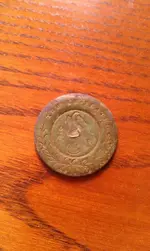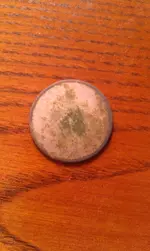Hmm, I have some "silvered" ones also of this type. I agree, not silver, usually does not tarnish.
In Tice's book, I could find no reference to anything other than silver plating, but did see Tin plating mentioned. Now this might be something to help, from Tice's section on Polishing and Plating; "In the last part of the eighteenth and beginning of the nineteenth centuries, plating was done by the Sheffield Thermal/mechanical process. Sheets of Sheffield plated copper were already covered with a layer of ilver when they arrived at the button shop."
I do not know if this "Sheffield plating of silver makes it different or not, but perhaps that is the answer?? I saw no mention of plating done like with what a Tombac button is, but yet the silver plating we are talking about acts like Tombac.
Don



